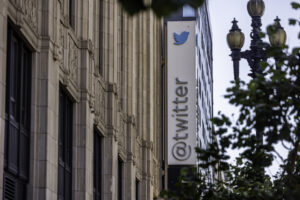Do No Harm: A Hippocratic Playbook for Newly-Minted CEOs
As one would expect, there is no more consequential, visible role within an organization than that of chief executive officer. For those new to the corner office—or who stand on the precipice of reaching the pinnacle leadership position of their career—there is an inherent responsibility to not only ensure the sustainability, profitability and development of their enterprise, but also to do no harm.
According to global research firm Gallup, the first few months of a CEO’s tenure are disproportionately important in determining their success. When done well, an incoming chief executive can unlock enterprise transformations and catalyze higher engagement, productivity, and profitability throughout an organization.
When done poorly, however, not only can a CEO find themselves the target of an unrelentingly negative news cycle, but they can also inadvertently sabotage their respective organization and its value to shareholders—as well as their own personal reputations, legacy, and career trajectory.
Perhaps the most recent and relevant example is Elon Musk’s rocky accession into the role of Twitter’s “Chief Twit”—the self-styled moniker Musk adopted after assuming the chief executive officer role following a very public fallout with the platform’s former board and executive team before the sale was finalized in October 2022.
While his turbulent tenure continues to garner headlines, the variables that make Musk an effective cautionary tale and unique case study for upwardly mobile executives is three-fold:
- The damage Musk inflicted to Twitter began before his first day as chief executive;
- His erratic behavior and decision-making—such as eliminating 80% of Twitter’s contract employees without notice—has raised doubts regarding the effectiveness of his leadership at Tesla, SpaceX and Starlink—where he concurrently serves as owner and CEO;
- Lastly, Musk seems to have bungled an opportunity to mint himself as a turn-around CEO capable of transforming the heavily indebted, liquidity-challenged organization.
To wit, The University of Michigan’s Journal of Economics summarized Twitter’s dire financial situation prior to Musk’s acquisition, stating, “Twitter has been operating at a massive loss for years, failing to book an annual profit since 2019,” writes Matthew Mahoney, who penned the journal’s report. “For eight out of the last ten years, the company has posted a loss. While losses are trending downwards, the company saw a net loss of a staggering $1.14 billion in 2020.”

Given the company’s inconsistent historical financial performance, Twitter was the perfect test-case for a once-in-a-generation CEO to make their mark—but only if shepherded by the right chief executive. Unfortunately, Musk’s affinity for untethered disruption only further pushed the company into a financial tailspin.
The Financial Times goes on to note that Fidelity, which owned a sizable stake in the social media platform through a listed fund, cut the value of their holdings from approximately $20 million in October 2022 to $8.6 million after Musk closed the deal.
While his coffers on Wall Street hoped Musk could quickly transform Twitter, much in the same way he bolstered Tesla and Space X, the billionaire tech-mogul instead directed his ire on a war with advertisers who had paused or ceased spending on the platform.
According to a report by Media Matters, half of Twitter’s top 100 advertisers—who collectively spent almost $2 billion since 2020—have abandoned the platform entirely. This includes major brands such as Chevrolet, Chipotle Mexican Grill, Ford, Jeep, Merck & Co. and Novartis AG. Additionally, Reuters notes that overall advertising spending by the top 30 companies on Twitter fell by 42% in November and December 2022 combined.
This compression, according to The Financial Times, has left the one-time world’s richest person with “far less room to raise cash by collateralizing more shares.” Additionally, Musk continues to raise concerns from his investors, having sold over $40 billion in Tesla shares to both help finance the Twitter acquisition and make good on his first interest payment, which came due in December 2022.
While Musk is hardly the first CEO to experience an erratic accession to the chief executive office, his example is rich with insights for other CEOs—and soon-to-be executives—seeking to exercise the corporate equivalent of a physician’s hippocratic oath.
When To Speak…Or Tweet
Putting aside Twitter’s ad-revenue challenges, many of the company’s current obstacles can be traced to statements—and actions—Musk has made in the press or on his platform.
According to Bill George, a senior fellow at Harvard Business School and the former chair and CEO of medical device company Medtronic, both new and seasoned chief executives have powerful voices, yet cannot —and should not—speak out on all issues or they risk losing relevance and creating self-inflicted damage.
“[CEOs] should start with their mission and values,” writes George in an April 2022 op-ed in Fortune. “If an issue relates directly to their mission, it is incumbent on CEOs to have a position.”
The challenge for Musk—a self-proclaimed free-speech champion and owner of the world’s most influential social communication platform—is determining when and where his voice adds value; a decision necessary to other CEOs as well.
However, measured action is very different from inaction, which George is quick to point out in the case of Bob Chapek and Disney.
“When Bob Chapek became [Disney CEO] in January 2021, [he] resolved not to take a public position on controversial issues, recognizing that there were many pitfalls in doing so, such as offending employees, customers, and public officials on opposite sides of any given issue,” writes George.
“Thus, when the Florida legislature proposed the Parental Rights in Education bill restricting discussion of sexual identity in schools, Chapek stayed quiet. Meanwhile, 150 companies signed a letter opposing the legislation.”
Ultimately, Chapek’s inaction and subsequent comments to limit the firestorm of controversy he created at The House of Mouse resulted in his dismissal. In November 2022, Chapek was replaced by his predecessor, Bob Iger, having just assumed the chief executive role in late February 2020.
According to The New York Times, Disney’s board surmised that Chapek had done “irreparable damage to his ability to lead, with a string of missteps resulting in the lost confidence of Wall Street and most senior Disney executives, as well as many rank-and-file employees.”
George says that consumer companies like Disney are particularly vulnerable to these types of cultural minefields, given the diversity of their customer base, which even in their shared passion, rarely have a unified position on cultural and social issues.
“As the Disney case illustrates, [CEOs] will be criticized whether they speak out or not,” says George. “With increasingly aggressive politicians challenging them, real money is at stake—not just public opinion. If companies have stated values about the importance of diversity, then they should line up in supporting their people. If sustainability is their focus, then they should be advocates for preventing the negative impact of climate change.”
Getting It Right…The First Time
For organizations who are able to select their next chief executive—barring a merger, acquisition or hostile takeover—companies can hedge negative headlines and any financial losses from an incoming chief executive through enhanced board oversight and intervention, as well as solid succession planning, says authors Maria Castañón Moats and Paul DeNicola in How the Best Boards Approach CEO Succession Planning, published by The Harvard Law School Forum on Corporate Governance.
While board inclusion is par for the course for succession planning, the rate at which CEOs are resigning or being removed from their positions has rapidly increased in recent years, suggesting more can be done within the boardroom to ensure their long-term success.
“In 2020, 56 S&P 500 CEOs resigned,” notes Harvard Law. “Of those who quit, 20% did so under pressure, up from 13% the year before. Meanwhile, average CEO tenures continue to fall, making it increasingly likely that directors will oversee more CEO successions during their board service.”
Interestingly, Chapek’s selection was applauded by analysts at the time who felt Disney’s board had secured the right candidate, given his 26 years of experience with the company.
One such expert was Steven Kaplan, professor and corporate governance expert at the University of Chicago’s Booth School of Business, who told The Los Angeles Times that “Chapek is very good on the execution side [and] he makes decisions and gets things done.”
Conversely, however, other industry analysts have pointed to Bob Iger’s abrupt exit from Disney and Chapek’s shifting responsibilities as a sign of misalignment at the board level.
“Iger stepped down with 22-months remaining on his contract to focus on the creative side of the business while handing day-to-day management to Chapek,” wrote The Los Angeles Times.
However, by April 2020, Iger had resumed control of the company’s operational duties while Chapek was still CEO, a decision the company attributed to the COVID-19 pandemic.
The challenge, writes The Harvard Law, is that “too many boards have only a vague notion of how they would respond to a sudden CEO departure, let alone one as enormous as Disney, with a $200 billion market cap. Given the abrupt rise in CEOs leaving unexpectedly, companies without an emergency plan jeopardize their financial futures and relationships with stakeholders.”
The report further advocates that companies develop an emergency succession plan, which entails identifying capable interim candidates who can step in quickly, “such as the CFO, COO, or other candidates already being groomed for the position.”
Harvard says that by having “emergency CEO candidates” entrenched with boards and current executive leaders, companies can help “smooth the transition…while the board searches for a long term replacement.”
Ready To Rise
Perhaps at no time in history have global enterprises found themselves wrestling with so many seemingly insurmountable challenges—from supply chain collapses amid the war for talent to increasing environmental and market pressures.
While freshly minted CEOs will undoubtedly face these obstacles to varying degrees, it is critical that enterprises establish systems and structures to avoid self-inflicted, and sometimes cataclysmic damage, that can arise when an incoming executive becomes the focus of the story instead of the facilitator of results.
Lastly, staying in close communication with their respective boards and CXO-level mentors, the better prepared an incoming executive will be to do no harm, writes Gallup.
“Not getting accurate, objective, performance-related insights is a mistake any new CEO can make. But the right advice can prevent it from becoming a career-ending mistake.”



